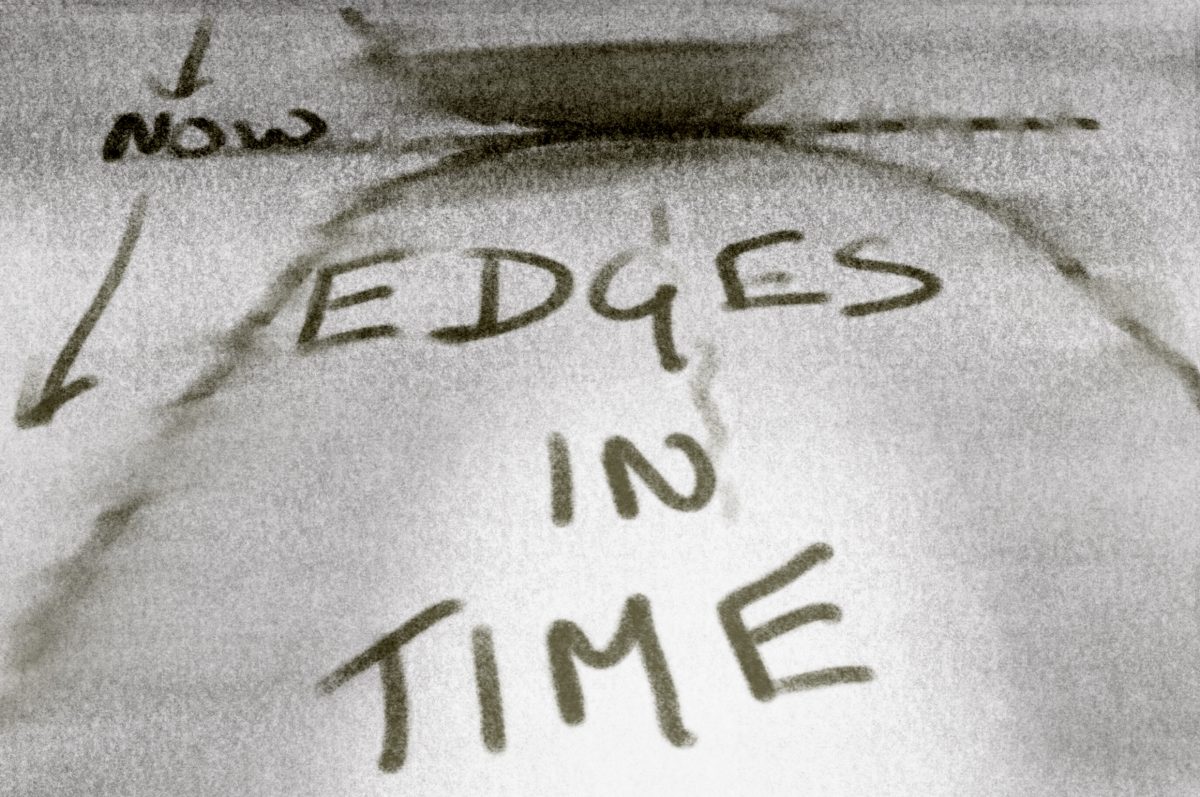Conceptual abstract exploration of the ways that our perceptions of past present and future change over the life cycle from beginning of life when the past starts gradually to be known, and the future looks long, large and bright to the final shortening of a future that looks increasingly dark, and memories slowly erase and possibly even our sense of ‘now’.
Visible Animators: Material Accumulation, Erosion and Trace
“Great care is normally taken to hide the animation process and presence of the animator to avoid distracting from the continuity of the movement. In stop-frame, shots including the shadow of the animator are deleted and re-shot. When the audience notices the presence of the animator through, for example, the tactile fact of a drawing on paper, this is a distancing effect. The viewer is made aware of the animator through production time; the build-up of layers of a substance or through the life and durability of the material itself.”
TASK: Make a quick 30-90 second animation exploring one of the following three animation techniques: accumulation, destruction/erosion or trace.
To start, you may want to restrict the materials you work with, so your animation can explore the possibilities of accumulation, destruction or trace by experimenting with mark-making, objects, or physical materials. Alternatively, you may want to explore these themes through image-making and metaphor by drawing, photographing or using found materials. Either way, be playful in your approach, and log all of your experiments on your learning log as well as your final piece.
Animation in physical media using build-up, erasure and trace techniques with both dry and wet physical media produces beautiful results. Media include sand art, charcoal, painting and mixed drawing and painting. Animation can be recorded with video and/or Stop Motion with different effects. Similar effects can also be reproduced digitally in software like TVPaint and Procreate on the iPad.
These are approaches that I want to explore in a lot more depth in Assignment 5, and also my animation work for SYP. My work in this project only starts to look at issues involved in complexities of planning, layering and performance that are different between physical and digital techniques.
Inspiration
Animation in physical media using build-up, erasure and trace techniques with both dry and wet media produces beautiful results.
I started by compiling a padlet of different potential media, styles and approaches including sand art, charcoal, painting and mixed drawing and painting.
Some of the activities are recorded with video, others using Stop Motion.
Charcoal Doodles
I started by experimenting with Charcoal Stop Motion, just doodling and experimenting with spontaneous drawing. Capturing in Stop Motion Studio on my iPhone using a uniform capture setting and varying the size of strokes each time to get differences in speed of build up and erasure.
Different effects can be achieved through using different types of charcoal, different rubbers and smearing tools and on different paper.
Narrative needs quite a lot of planning.
The resulting videos can then be further edited with audio in TVPaint (most versatile for frame by frame) and/or Premiere and/or After Effects (for standard video effects) to vary the speed of build up, tone/colours, layering etc.
Edges in Time:
iPad timelapse in Procreate
The second set of animations were experiments in conceptual abstraction for SYP ‘Edges in Time’ starting to think about the ways that our perceptions of past present and future change over the life cycle from beginning of life when the past starts gradually to be known, and the future looks long, large and bright to the final shortening of a future that looks increasingly dark, and memories slowly erase and possibly even our sense of ‘now’.
This series was produced in Procreate Timelapse video on my iPad using charcoal paint, smear and erase brushes in different sizes and opacities. Unlike charcoal animation, Procreate allows different layers to be altered and manipulated. But it is very difficult to control brush strokes – normally this is achieved through experimentation and undo/redo that is fiddly when all this is recorded with minimal editing capacity. It is also extremely difficult to control speed and relative pacing of animation – it is not always clear what will record as a slow process or as a single frame jump.
This was an interesting and quick way of conceptual experiment to see how things might work. But obviously needs a lot of refinement, probably in a combination of physical media and more professional pc software.
Edges in Time abstracted concept animation will be an important part of SYP, even if the end result is not professional. And further developments will be included as part of MI A5 Presentation.

